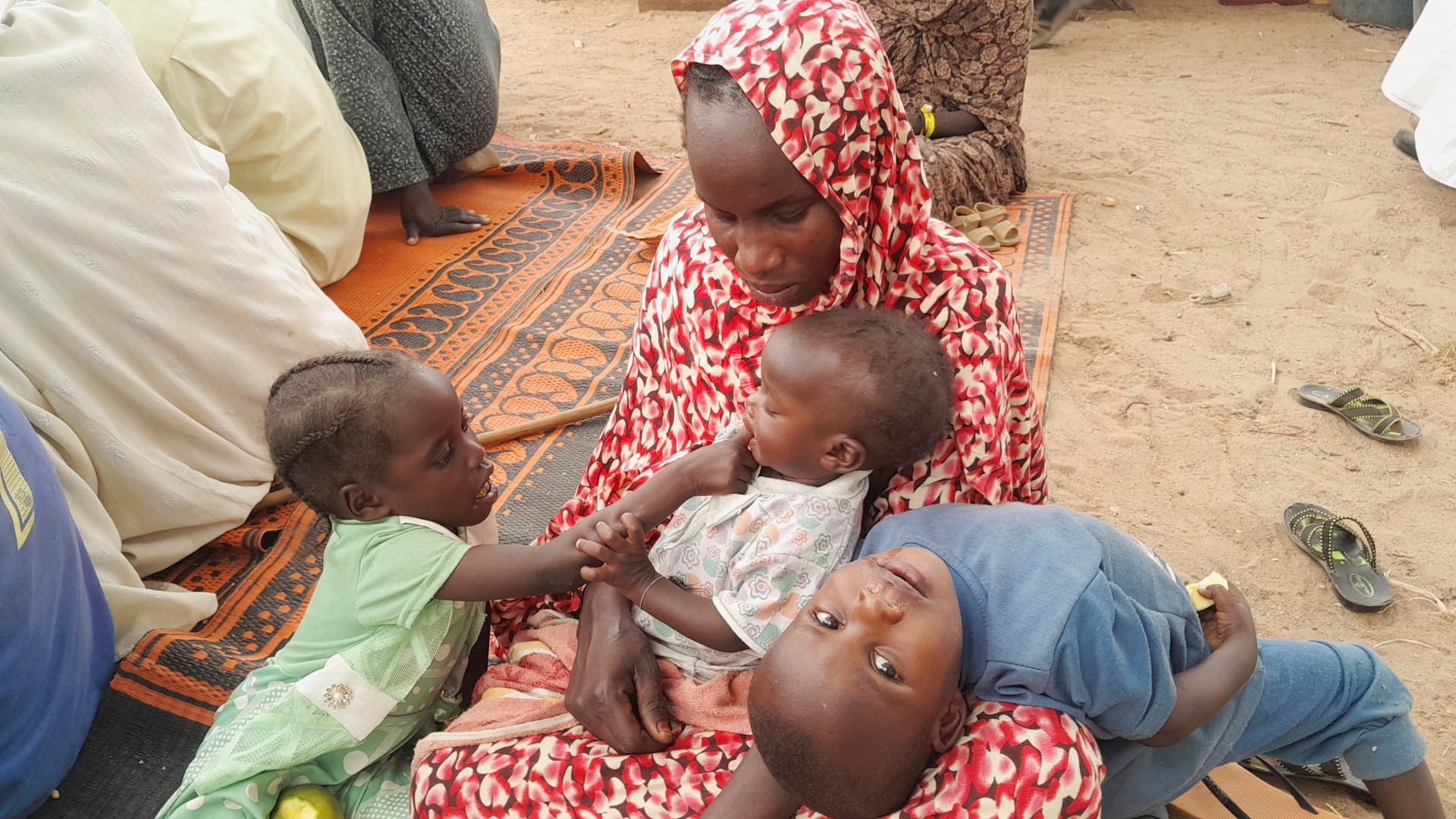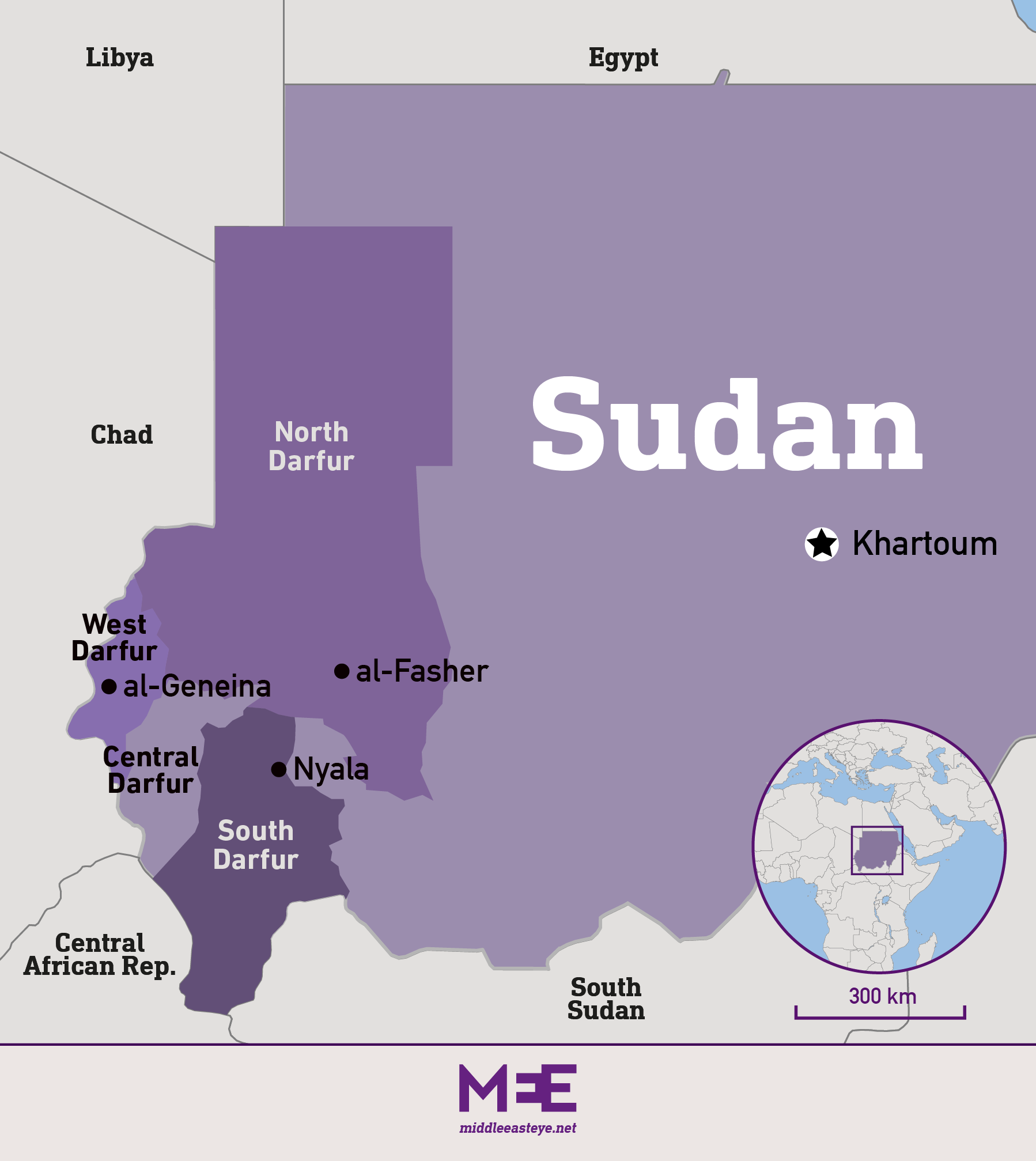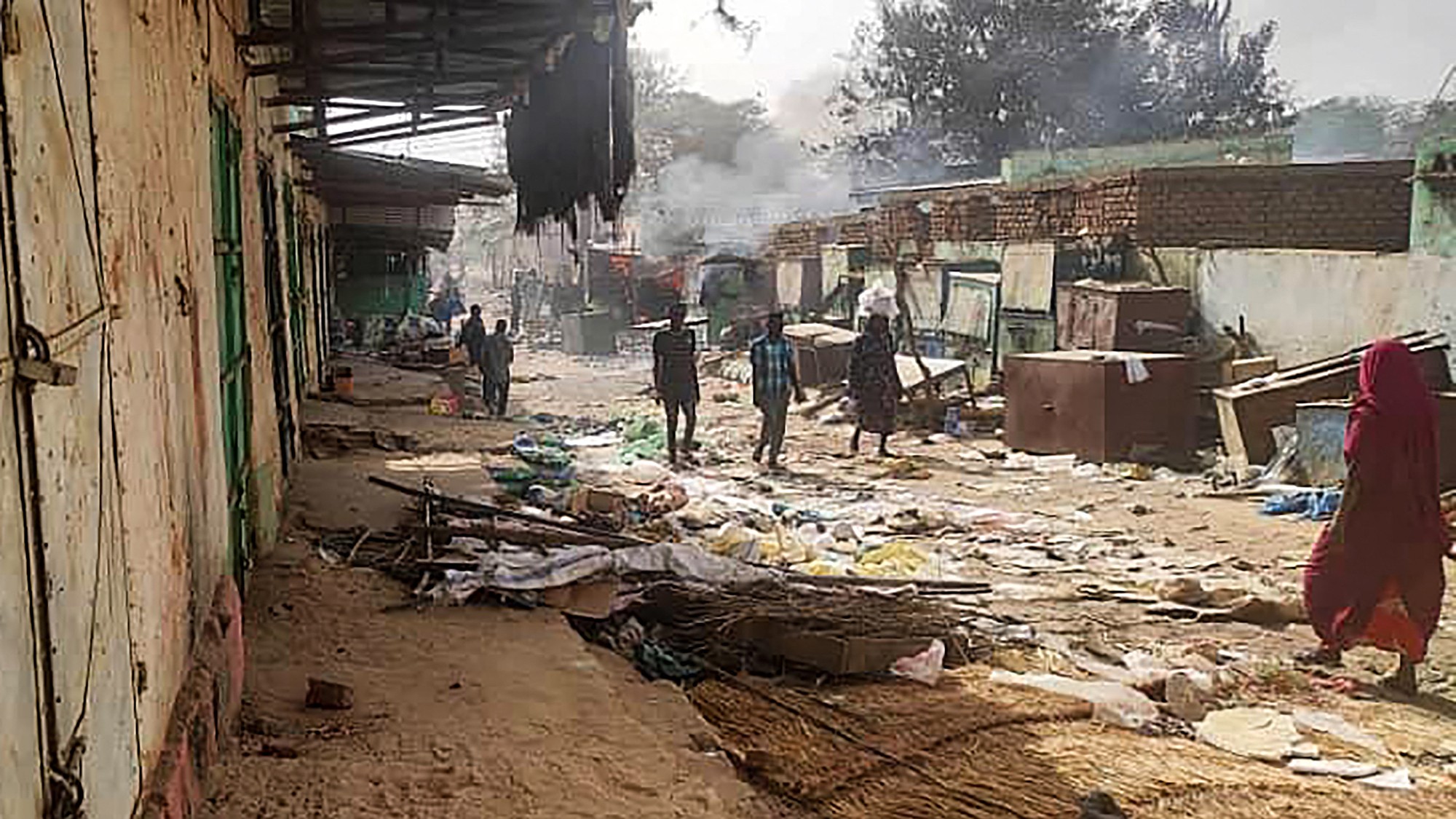Sudan: Bloodshed in Darfur as Hemeti’s allies and enemies vie for control

As the world’s eyes have been locked on violence erupting in Khartoum, to the west the restive Sudanese region of Darfur has been set ablaze, with clashes believed to have killed hundreds.
Darfur is known to be a stronghold of the Rapid Support Forces (RSF), a paramilitary which emerged from the Janjaweed militias that fought rebel groups in Darfur’s conflict two decades ago.
Yet the RSF and its leader, Mohamed Hamdan Dagalo, commonly known as Hemeti, have many enemies in the region: former rebel movements, Sudanese displaced by previous rounds of fighting, and a former Janjaweed militia led by Hemeti’s rival Musa Hilal.
Meanwhile, the RSF commands the allegiance of many tribal militias, including from the Rezeigat, Messiria, Habani, Salamat and Bani Halba tribes.
These tense dynamics are already playing out in the region’s different states, with violent and deadly consequences.
Stay informed with MEE's newsletters
Sign up to get the latest alerts, insights and analysis, starting with Turkey Unpacked
If anything, the war with the Sudanese armed forces that is centred in Khartoum - and fought originally over plans to fold the RSF into the army - is more aggressive and bloodthirsty in Darfur, where hundreds are believed to have been killed and at least 20,000 civilians forced to flee into neighbouring Chad.
Unexpected defeat
Nyala, the capital of South Darfur state, is renowned as the homeland of Hemeti’s allied Arab tribes, particularly the Rizeigat. Its conquest by the Sudanese army, therefore, has been seen as a shocking blow for the RSF.
Eyewitnesses told Middle East Eye that fighting is ongoing in Nyala and its environs, as well as villages across South Darfur.
Typically for Sudan, which has a widespread pro-democracy movement among the people largely ignored by the country’s powerful generals and the international community, an anti-war rally was held on Friday, with hundreds calling for an end to the fighting. This time, the protest was led by women.
Protest leader Salma Ahmed told MEE by phone from Nyala that they wanted to highlight abuses by both warring factions.
“The situation in the city is deteriorating: no food, no water and other basic needs, and people are staying indoors. There are no police and the people are terrified,” she said.
Some 200km away, in North Darfur state capital Al-Fasher, fighting concentrated in the first week of the conflict over the city’s air base, eyewitnesses told MEE.
Al-Fasher resident Ezaldin Ahmed told MEE that many army soldiers were killed as they defended the air base, with clashes spreading into the surrounding neighbourhoods.
The battles, he said, were “horrifying”.
“The two sides used everything they had to capture it. But in the end, it’s now in the hands of SAF [the Sudanese armed forces]. We saw a lot of bodies in the streets around the airport," he recalled.
The situation in North Darfur has calmed in recent days, Ahmed said, following attempts among tribes to reach calm and keep their communities out of the war.
Osman Adam, a local tribal leader, told MEE that tribal leaders in North Darfur sat together, talked and agreed not to intervene on either side.
“But the other reason fighting has slowed down is the deployment of the Joint Force, which contains former rebels,” he said.
The Joint Force was established in the 2022 Juba peace talks in an attempt to bring former rebel groups back into the fold and create an alternative to the UN peacekeeping force in the region. It is made up of former rebel groups, regular military units, and RSF elements, and answers to Suliman Arcua “Minni” Minnawi, a former rebel leader now serving as governor of the Darfur regional government.
Minnawi has deployed the Joint Force between the army and RSF in and around al-Fasher, seeking to create a buffer between the warring factions.
Bloodshed in al-Geneina
The scene in al-Geneina, capital of West Darfur state, is completely different. There, the RSF and its allies have complete control, with the army nowhere to be seen.
Sources in the city told MEE that the RSF and its allied tribal militias quashed any hint of resistance by killing civilians and setting much of al-Geneina on fire, including government offices, homes and the market.
An eyewitness from the Hai al-Shati neighbourhood said the army attempted to counter the RSF in the city on 23 April, before being beaten back, with its soldiers now withdrawn into the military headquarters, where they remain.
Former rebel forces led by Khamis Abakar, governor of West Darfur, have also clashed with the RSF.
However, rather than attempting to take an active part in the conflict, sources in al-Geneina insisted the former Sudanese National Alliance rebels were instead defending themselves, the areas they operate in, and Abakar’s residence.
"The RSF and its Arab militia allies from the region and around al-Geneina attacked and seized the headquarters of the joint Sudanese-Chadian forces in the state. The national army tried to defend it but withdrew after a short time and went to their HQ, so the militias are controlling everything in the city," aid worker Dldoom Ahmed told MEE.
"They killed everybody, looted everything, burning everywhere … It is still ongoing.”
The Sudanese military, RSF and West Darfur governor have been approached for comment but gave no response by the time of publication.
Camps close to collapse
Throughout Darfur are camps housing internally displaced people (IDPs) who have suffered under two decades of sporadic conflict between Darfur’s warring factions. More than two million internally displaced Sudanese are in Darfur, and this latest war is only making their situation worse, a committee representing the IDPs said.
The committee has sent out an urgent call to international aid organisations, saying the humanitarian situation in the camps is “deteriorating quickly” and close to collapse.
“The situation is miserable. The IDPs need to flee again from the camps as even the camps have been attacked, especially in al-Geneina, so the people are fleeing to Chad or any other safer place,” it said in a report seen by MEE.
Now two weeks into the fighting, which has killed more than 500 people and wounded some 4,600 others according to the Sudanese health ministry, the army and RSF are beginning to pressure people to pick a side. That could expand and prolong the conflict, experts warn.
Various internationally brokered ceasefires have come and gone with fighting barely interrupted. Neither Hemeti nor Abdel Fattah al-Burhan, head of the army, have shown any real intention of sitting down for a negotiated settlement.
In Khartoum, the conflict only gets bloodier and more complex. Mohamed Badawi, a Sudanese political analyst, warned that Darfur is at risk of breaking out into renewed widespread ethnic conflict if the battles in Khartoum continue to worsen.
“The conflict in Darfur has taken on two layers: one is between the SAF and RSF,” Badawi, a Darfur expert and researcher in the African Center for Peace and Justice, told MEE. The other layer, he said, is between the Arab tribes in Darfur and both the warring parties.
“However, the two layers are overlapped, as the two warring factions are trying to gain more allies.”
If Sudan’s conflict intensifies, those layers are set to overlap ever further, with deadly consequences.
This article is available in French on Middle East Eye French edition.
Middle East Eye delivers independent and unrivalled coverage and analysis of the Middle East, North Africa and beyond. To learn more about republishing this content and the associated fees, please fill out this form. More about MEE can be found here.







